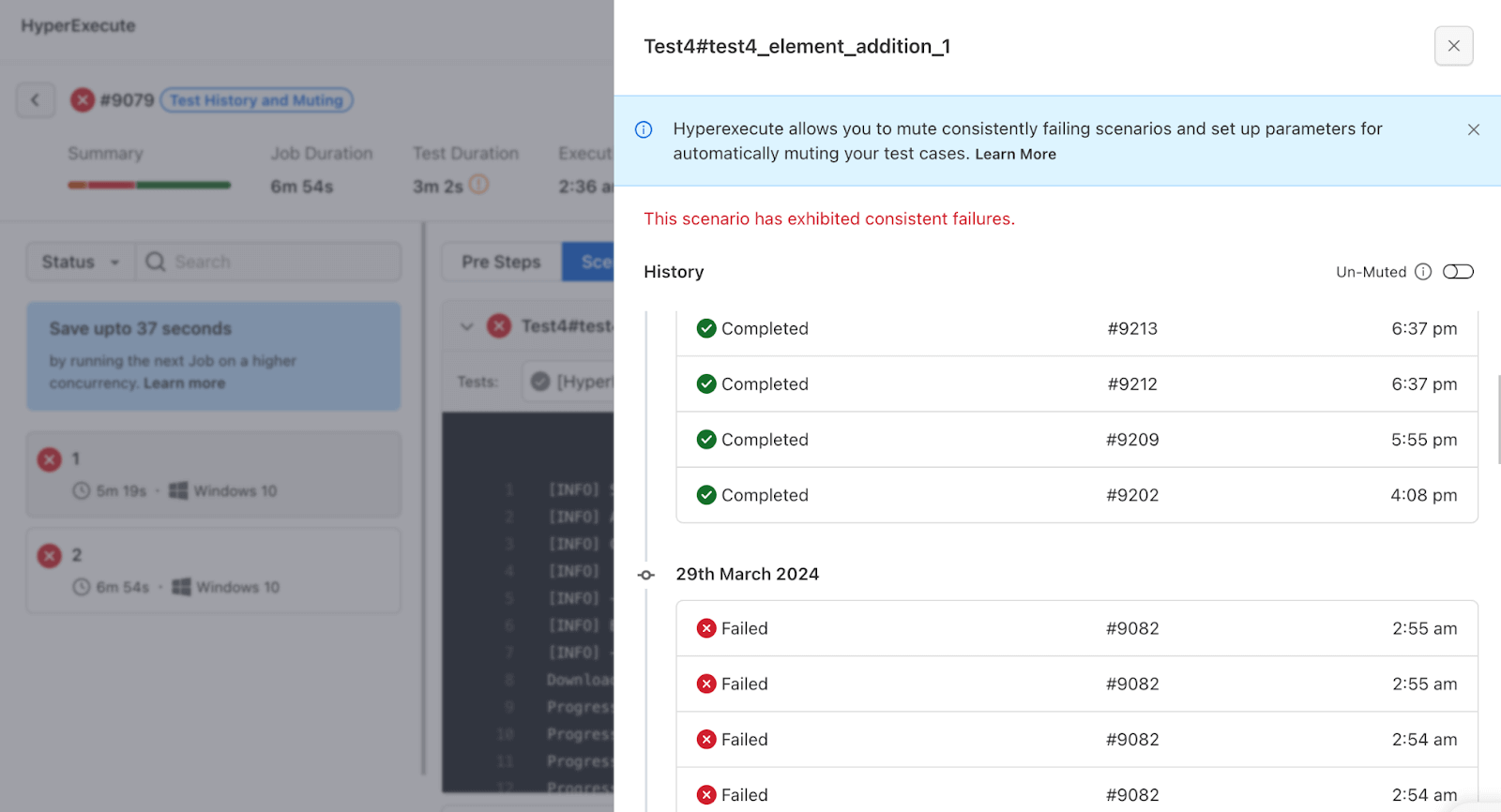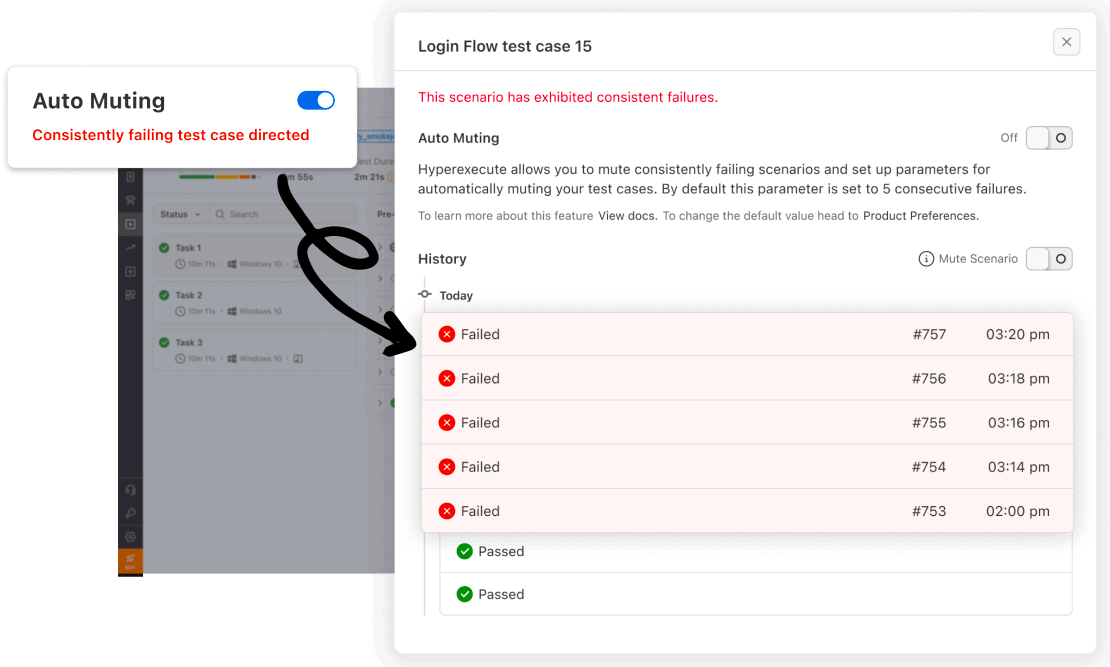Accelerate Cypress Testing with HyperExecute
Aman Chopra
Posted On: April 30, 2024
6 Min
Cypress testing has been a cornerstone for web application development, offering a powerful and user-friendly way to automate testing processes. But as the applications grow in complexity, so do your Cypress test suites, leading to multiple bottlenecks, sluggish test execution, and the ever-present frustration of flaky tests. Similar was the case with one of our customers who were running Cypress via Jenkins CI.
HyperExecute, A Next Gen testing platform, came to their rescue. HyperExecute enabled them to run their Cypress tests more efficiently and achieve a shorter testing cycle. In this blog, we will dive into the challenges faced by one of our Cypress customers who manages large test suites within their Jenkins CI/CD pipelines and how HyperExecute helped overcome those challenges.
Struggles with Monorepo Applications
Our customer, a fast-growing startup, relied on Cypress to automate their web application tests. They had a monorepo to manage their code, which kept everything organized but became a bottleneck during the testing cycles.
The problem? Fetching their entire mono repo in Jenkins, including libraries and functions not needed for testing, took forever to just get ready for test execution. This wasted valuable time and resources, making daily releases difficult.
At HyperExecute, solving this problem was a piece of cake with the “target-directory” feature. This allowed them to specify the exact directory containing just their test suite and essential dependencies, eradicating the need to fetch the whole mono repo every time for test execution.
--target-directory "/home/users/work/yaml/scripts/"
Using a simple flag to instruct the platform, instead of fetching their entire monorepo, they could now point to critical code within a specific directory, which included only their test suite and essential dependencies, dramatically reducing the overall duration and optimizing resource usage. Time spent preparing for test execution went drastically down by ~58%, from an average of 12 minutes to approx 5 minutes.
Handling Large Dependencies
The team had another problem slowing them down. Every time they ran their Cypress tests on their Jenkins pipeline, it involved downloading all the libraries and dependencies anew. The time taken in this repetitive process was huge and delayed their feature releases and bug fixes.
HyperExecute addressed this challenge with its inbuilt intelligent caching mechanism. Our smart caching mechanisms identified and stored critical libraries and dependencies required for test execution on the first run, significantly accelerating the subsequent test cycles.
The team observed a reduction in their dependency installation time from around 20 minutes to a mere 30 seconds, a staggering time-saving in their testing cycle.
Fixing Failed Tests, a Nightmare
Whenever the team encountered any failed tests, they would want to fix them one by one. However, with Jenkins in place, every minor code change meant triggering the complete cycle. As a result, the QA had to wait while the whole code base would be fetched onto Jenkins and then get triggered. It became a major inefficiency while doing frequent changes in an attempt to fix test cases.
This nightmare was brought to an end with our differentialUpload feature. HyperExecute would identify only the parts of their test scripts that had been modified since the last run and only fetch for those files, drastically reducing the size of the package and the setup time to trigger the test suite.

With HyperExecute, their team could make code changes, run tests, and iterate much faster without getting bogged down by unnecessary waits in test preparation & setup.
Mitigating Frustration of Failing Tests
With the Jenkins-based setup, the QA team was also facing the challenge of flaky tests. These tests, which passed inconsistently, were a bummer. Hours were wasted debugging these gremlins, hindering progress on new features and releases.
Understanding this frustration, HyperExecute provided a multi-part approach to address flaky and failing tests:
1. Auto Test Retries
HyperExecute recognized that tests sometimes fail due to temporary glitches and thus offered them the retry on failure option. By retrying failing tests (even at a spec level), HyperExecute provided them with an opportunity to pass on subsequent runs, within the same test cycle. This helped identify and potentially eliminate issues caused by temporary glitches.

2. Test History Analysis
Test History Analysis wasn’t about quick fixes, but about gleaning valuable insights from the past to prevent future headaches. By analyzing trends across multiple test runs, the team could pinpoint which tests were consistently failing or flaky. This helped them narrow down the search for the root cause of the flaky tests.
By leveraging this historical data, their team could work proactively to eliminate flakiness and ensure their tests were consistently reliable. This translated to less time wasted debugging and more time focusing on building a high-quality application.

3. Test Muting: Silencing the consistent failing tests
While Test History Analysis helped a lot, the team still had to deal with the immediate issue: how to manage the constant barrage of tests that kept failing consistently.
HyperExecute offered Test Muting, as a way to silence the noise. These tests, while potentially valuable in the long run, were currently a distraction from the critical issues. With Test Muting, the QA team could temporarily remove some tests from the execution cycle.

Test Muting brought a sense of calm to the development workflow. Developers weren’t constantly bombarded with alerts from these tests. They could now focus their energy on fixing issues that truly mattered, leading to faster development cycles and a more polished final product.
Conclusion
Traditional CI/CD pipelines and Cloud Testing Grids can hinder the efficiency of even the best frameworks like Cypress. HyperExecute cuts through these limitations of standard CI pipelines with its innovative features and focuses on making QA teams more efficient and productive.
By leveraging HyperExecute for Cypress testing, your teams can achieve high-performance testing even for the most complex web applications. This allows them to focus on building amazing web apps, with the confidence that HyperExecute has their testing covered. Try it now!
Author
















